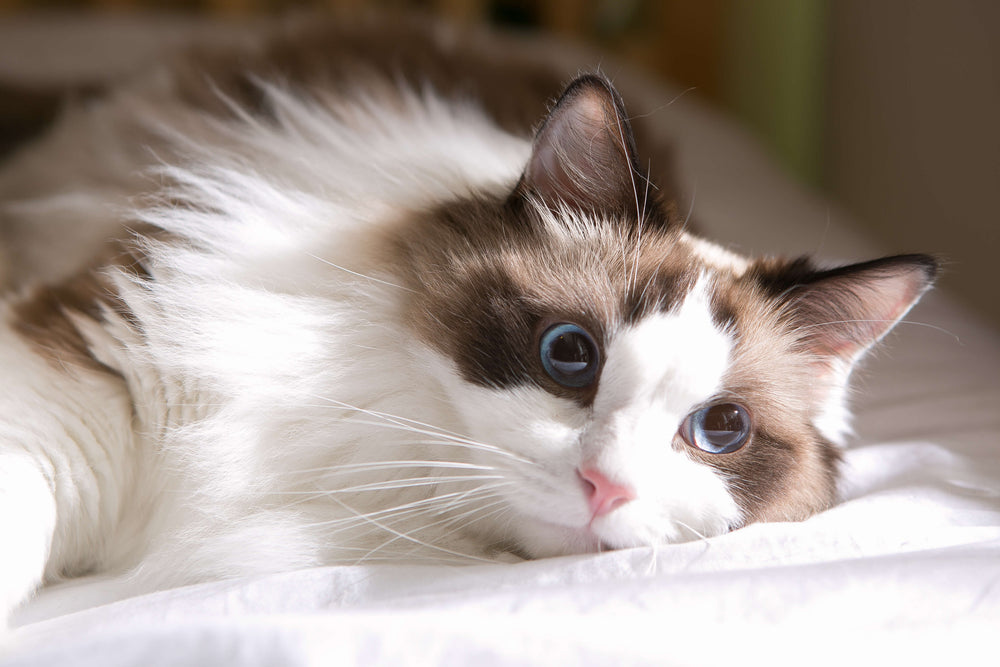
In the family of large cats, we ask for the Ragdoll. Females can weigh up to 6 kilos, while males can reach 9 kilos. Maine Coons had better watch out! With an imposing appearance, the Ragdoll cat is nonetheless one of the most endearing cats. We can only melt with love for this big ball of fur. If you have a Ragdoll, you are probably wondering what food to choose for him, how to feed him well. We tell you everything in this article.
The Ragdoll, a cat with crazy origins
Naturally elegant, the Ragdoll is a relatively recent breed of cat, having been created in the 1960s in California. It is the work of Ann Baker, a Persian breeder who one day saved Josephine, a white Angora cat, from a car accident. She gave her all the necessary care, and when the kitten recovered, she “married” her to a male from her breeding.
The first litters were exceptional: kittens that were kinder, more docile and affectionate than those born before Joséphine's accident. The baby cats had another characteristic that was not found in the other kittens; they had a great aptitude for being handled, for relaxing in your arms when you carried them. Because of this ability to become all soft, Ann Baker named this breed Ragdoll, which means "rag doll" in English.
For the breeder, Joséphine's accident was the cause of this change. She claimed that Joséphine's behavior, once very aggressive, had been changed by the accident, that she had been genetically modified at the clinic where she had been treated and even that she had met aliens," says the Official Book of Feline Origins ( LOOF ). Whether this was true or not, the breeders who had followed Ann Baker in her breeding program decided not to follow her stories, and to present the breed in cat shows as a completely normal cat. The Ragdoll cat was officially recognized in 1971 in the United States, then introduced in France in 1986.
Today, the Ragdoll is one of the favorite breeds of the French . It ranks 4th among the most popular cats in France, after the Maine Coon , the Birman and the Bengal . If you are reading this article, you probably have one at home 😻 And you are very lucky!
The Ragdoll Cat, a Gentle Giant
The Ragdoll cat is a real bundle of love. Despite its imposing size - it can reach 9 kilos - it is an extremely affectionate cat that loves cuddles and spending time with its adoptive parents. It can sometimes be a little clingy, but the Ragdoll does not like solitude very much. What it appreciates above all is company. It wants to be surrounded and pampered within its home. It will even prefer to change homes rather than stay alone during the holidays.
This handsome mustachioed dog, who often has blue eyes, has a very docile character, he is an excellent companion for the whole family. Although he is naturally rather calm, he is nonetheless very playful. Just like the Bengal and the Birman, this handsome furry dog with intense blue eyes can be a real cat-dog. A piece of cardboard, a piece of string or a bottle cap can amuse him for hours.
If your little companion is a Ragdoll, you must be filled with happiness. We imagine that he brings you moments of intense joy (and sometimes a few laughs). But like many parents, you must ask yourself a lot of questions about his diet. How to feed your Ragdoll cat properly? What cat food should you choose to keep him healthy? We understand. While imposing, he remains a sensitive animal.
At Ziggy, his diet holds no secrets for us. We tell you everything in this article. And we promise, we won't talk to you about aliens 😹
Does the Ragdoll cat need a specific diet?
The Ragdoll is no different from other cats. Just like his friends the Bengal , the Maine Coon , the Birman or the British Shorthair, he is a strict carnivore, that is to say that he cannot live and stay healthy without animal proteins in his food.
These are absolutely essential, because they are the source of the 11 amino acids essential to its health: taurine, arginine, phenylalanine, methionine, valine, leucine, isoleucine, lysine, tryptophan, threonine and histidine. All these micronutrients participate in the proper functioning of its body (immunity, growth, digestion, reproduction) and its structure (bones, skin, hair).
Without animal proteins, and therefore without these amino acids, your little companion would have severe deficiencies. For example, a taurine deficiency causes central retinal degeneration (irreversible blindness), impaired immune function and cardiomyopathy. An arginine deficiency results in hyperacute ammonia poisoning (severe encephalopathy with vomiting, hypersalivation, nervous disorders and death in less than three hours).
Be careful with the words “strict carnivore”, however. Your cat must consume proteins, but it also needs other nutrients to be healthy. It must find lipids (essential fatty acids), minerals (calcium, phosphorus, magnesium, potassium, sodium, etc.), vitamins (especially group B) and some fibers to have good intestinal transit. Fibers that are notably provided by vegetables such as carrots and zucchini.
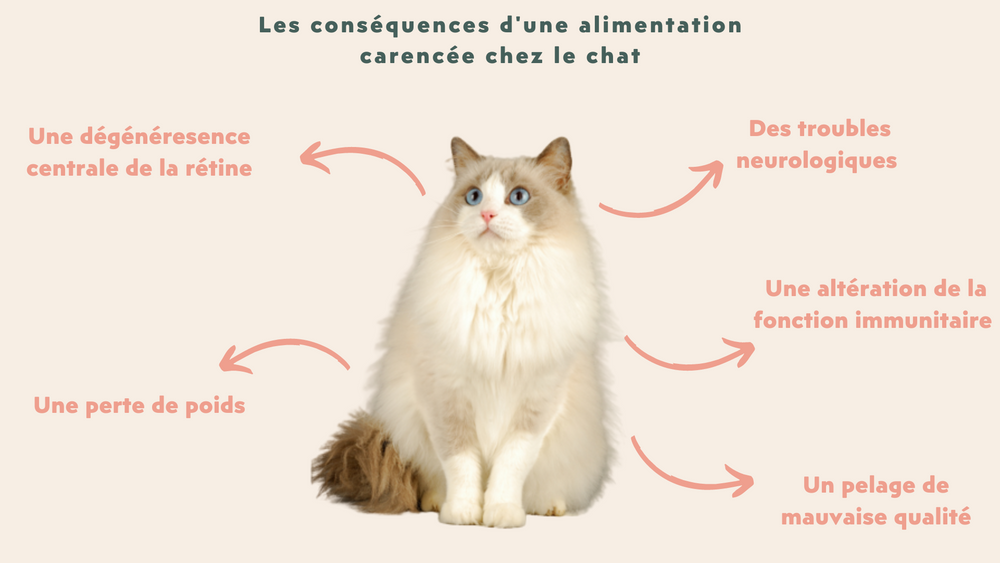
The Ragdoll cat has the same nutritional needs as all other cats. It does not need a specific diet!
However, you must ensure two things: that its food is not too high in calories, and above all, that it is low in phosphorus - the Ragdoll is a cat predisposed to polycystic kidney disease . This pathology presents itself in the form of cysts that appear in the kidneys.
What food should I choose for my Ragdoll cat?
A diet that is not too high in calories
Since the Ragdoll is primarily an indoor cat and therefore often not very active, it is advisable to feed it a low-calorie diet so that it does not become overweight or obese .
Note that being overweight and obese can lead to serious health problems for your mustachioed dog. In particular, he may develop a urinary or kidney disease such as kidney failure (a condition to which the Ragdoll is already very susceptible), diabetes , osteoarthritis or even respiratory problems.
For your cat, choose a diet that is not too high in calories. Be careful, however, this is not about dieting, but about offering him a low-calorie food that covers his nutritional needs just as well.
At Ziggy, we advise you to offer your little companion a wet diet, namely pâté. This is on average four times less caloric than kibble ; it allows your ball of fur to eat enough, to be well satisfied, and this, without absorbing too many calories. In addition, unlike kibble, pâté also has the advantage of meeting your cat's water needs; it is very rich in water! Your Ragdoll cat will drink without realizing it, and above all, his kidneys will thank him! Because what is the kidneys' best friend? It's water!
Yes, pâté, but which one to choose?
We're not going to beat around the bush; not all cat food is equal. Here's what we recommend to keep your beautiful kitty healthy and in great shape.
A complete pâté
First of all, you need to distinguish between complete pâtés and complementary pâtés . The difference? Complete pâtés contain all the nutrients your cat needs to be healthy: proteins, lipids, fibers, but also vitamins and minerals. They can be given as the only or main food. This means that you do not need to supplement its ration with other foods.
Conversely, complementary pâtés do not cover all of your cat's nutritional needs. They may contain high levels of certain substances or be devoid of certain nutrients. A complementary food must be combined with other foods to form a complete ration and thus avoid nutritional deficiencies.
For your little cat, you must choose a COMPLETE pâté!
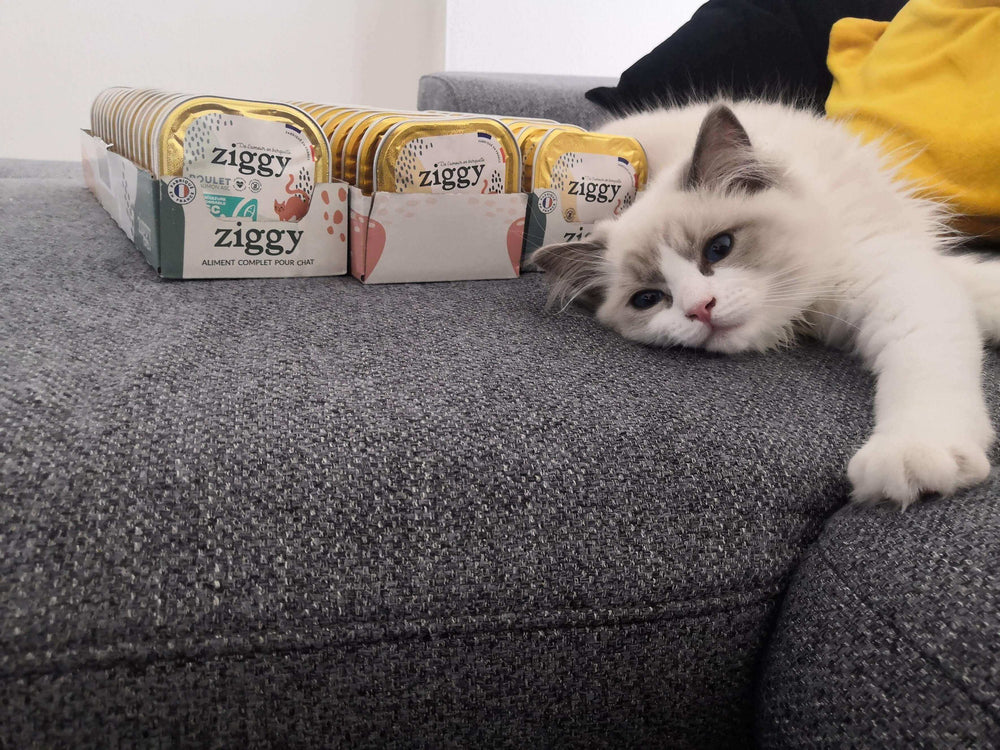
A pâté rich in quality proteins
Be careful, some pâtés, although complete, unfortunately contain low-quality proteins. And as we saw a little earlier in this article, proteins are essential to the health of your furry friend!
The majority of wet cat foods do not contain noble offal or real pieces of muscle, but reconstituted meat (mixture of proteins of animal and vegetable origin), mechanically separated meat (MSM) or even animal meal.
VSM, what is it? As explained in our glossary , it is a product “obtained by the removal, using mechanical means, of meat from the bones or carcasses of poultry. Obtained after boning, this product may contain bone, cartilage or marrow residues, unlike ground meat or meat for minced meat”.
If manufacturers use this type of product, it is for economic reasons; they are less rare and less expensive. Hence the boxes of pâté at 30 or 50 cents each…
These proteins, which contain a lot of bones and carcass, do not provide much from a nutritional point of view, and above all, they can impact your cat's health in the long term. When your mustachioed one consumes these proteins, he will not use them all for his metabolism. The unassimilated amino acids will be eliminated through the urine, which will make your kitty's kidneys work a lot. And over time, this excessive consumption of "bad proteins" can impact his kidney function.
And how do you know if the proteins used are of good quality?
Several indicators displayed in the analytical constituents (on the back of the packaging) can also help you:
- The Protein-Phosphorus Ratio (RPP)
- The phosphorus rate
- The crude ash rate (indirect quality indicator).
For example, the crude ash content indicates the amount of minerals (calcium, phosphorus, magnesium, etc.) present in your cat's food, after it has been completely burned. And the higher it is, the more carcass has probably been added!
We explain everything to you in our article on proteins in your cat's diet.
At Ziggy, all our cat food is complete and rich in quality proteins. We only use noble offal and real pieces of muscle so that your cat is healthy; with salmon, beef or chicken.
My Ragdoll cat doesn't like pâté and prefers kibble
Obviously, kibble is not forbidden for your Ragdoll cat. You can absolutely give him kibble, but these dry foods should remain a minority in his bowl. If your little Ragdoll loves kibble, choose kibble rich in animal proteins and especially low in carbohydrates .
A diet that is too rich in carbohydrates can be responsible for excess weight. It can also increase the demand for insulin secretion, and thus predispose to the development of diabetes mellitus. To learn more, do not hesitate to consult our article on carbohydrates in your cat's diet.
Most kibbles unfortunately contain a lot of carbohydrates, even those without cereals! Note that to make these dry foods, you absolutely need starch, which is nothing other than a carbohydrate. As explained in our article on preconceived ideas about feeding your cat , in cereal-free kibbles, manufacturers use tapioca, lentils or chickpea flour. Substitutes for cereals that provide a lot of carbohydrates. Some packages can contain up to 50%!
So check the carbohydrate content of your kibble carefully. For an adult cat, this content should be around 25. If the brand does not mention it, just take out your little calculator and add up all the content of the analytical constituents: crude protein, crude fat, crude ash, crude cellulose and moisture.
A diet low in phosphorus
With an imposing appearance, the Ragdoll remains above all a very sensitive cat, subject to hereditary diseases such as polycystic kidney disease, a pathology characterized by cysts in the kidneys. The renal function of Ragdoll cats being very sensitive, it is therefore necessary to ensure that it is given food that preserves its renal function. This is also the case for Sacred Birman cats.
For your Ragdoll cat, you need to be particularly vigilant about phosphorus in its food. Several studies, including those by Böswald (2018) and Dobenecker (2018), have shown that foods rich in digestible phosphorus can have harmful consequences on the renal function of our cats. Like urea, this nutrient is eliminated by the kidneys. And the more important it is, the more these organs will have to work to eliminate it.
However, phosphorus should not be completely banned from kitty's bowl. This nutrient participates in cell growth and differentiation, energy metabolism, fatty acid transport, and the synthesis of amino acids and proteins. It also works in synergy with calcium. Without phosphorus, calcium cannot be absorbed by the body.
It's all about balance and dosage. Your Ragdoll cat's food should be balanced in calcium and phosphorus, with enough of each (neither too much nor too little).
Low-phosphorus kibble and pâté: how to make the right choice?
Phosphorus is found in many food sources, including grains and meat. But where it is most present is in carcasses (containing bone), cartilage and fish bones. And unfortunately, many manufacturers use these products in their kibble and pâté recipes.
An indicator can help you make an informed choice here: the phosphocalcic ratio.
You will find it on the labels of your cat's food under the formula Ca/P. This should be between 1 and 2 in the absence of renal insufficiency and between 2 and 3 in the case of renal insufficiency.
At Ziggy, we display this ratio on all our products, in the analytical composition.
Example for our pâté for sterilized cats with chicken (see image on the right).
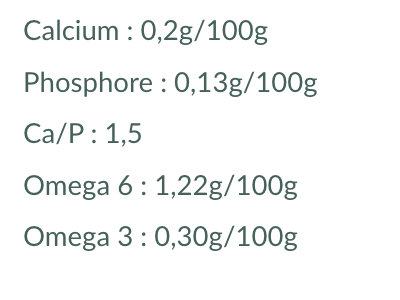
If your cat's kibble and pâté do not indicate a ratio, simply do this little calculation: calcium level / phosphorus level = Ca/P
And what if these two rates, calcium and phosphorus, are not mentioned?
RUN AWAY!!!! No, joking aside. In this case, you can look at the raw ash content (percentage of minerals present). This indicator is mandatory by European law! As explained above, if the raw ash content is high, carcass has certainly been added!
If your Ragdoll cat already suffers from renal insufficiency , know that we have developed a pâté specially designed for cats with renal insufficiency, Ziggy VET . Formulated by our veterinary nutritionist Dr. Géraldine Blanchard, this diet pâté is low in phosphorus and has an excellent phosphocalcic ratio to support renal function in cases of chronic kidney disease.
Fibers for a perfect transit!
The Ragdoll has an exceptional coat, a long tail that looks like a feather duster. But these hairs can also cause some intestinal problems. Because even with regular brushing, your cat actually ingests a lot of hairs during grooming. And these can get stuck in his large intestine and cause intestinal obstruction.
For his little transit, it is also important to offer your big companion foods rich in fiber . In our Ziggy pâtés, for example, we add dehydrated carrot and zucchini.
Fatty acids for its beautiful coat
The Ragdoll probably has the most beautiful fur of all our feline friends (shh, don't tell the others 😸) Soft and silky, it is absolutely gorgeous. But such a coat requires a little maintenance.
To keep your mustachioed man's beautiful coat, he must find fatty acids in his diet, and in particular Omega 3 and 6. Omega 3 is found in fish, shellfish and flax seeds, and Omega 6 in vegetable oils such as rapeseed oil.
Another essential ingredient: proteins! Yes, as a reminder, the skin and hair are largely made up of them (keratin). During the hair growth phases, the protein requirement can represent up to 30% of the animal's protein intake!
So for its beautiful coat, we rely on proteins (quality), Omegas 3 and 6.
Pssst: for a beautiful coat all year round, our pâtés contain all these ingredients. Yum, yum, meow 😻
How much pâté and/or kibble should I give my Ragdoll?
It all depends on his weight, age and physical activity. If your Ragdoll spends a lot of time napping on your lap, he will need a little less kibble and pâté than his sporty counterparts.
To easily and accurately determine the amount of food to give your Ragdoll, use our personalized ration calculator
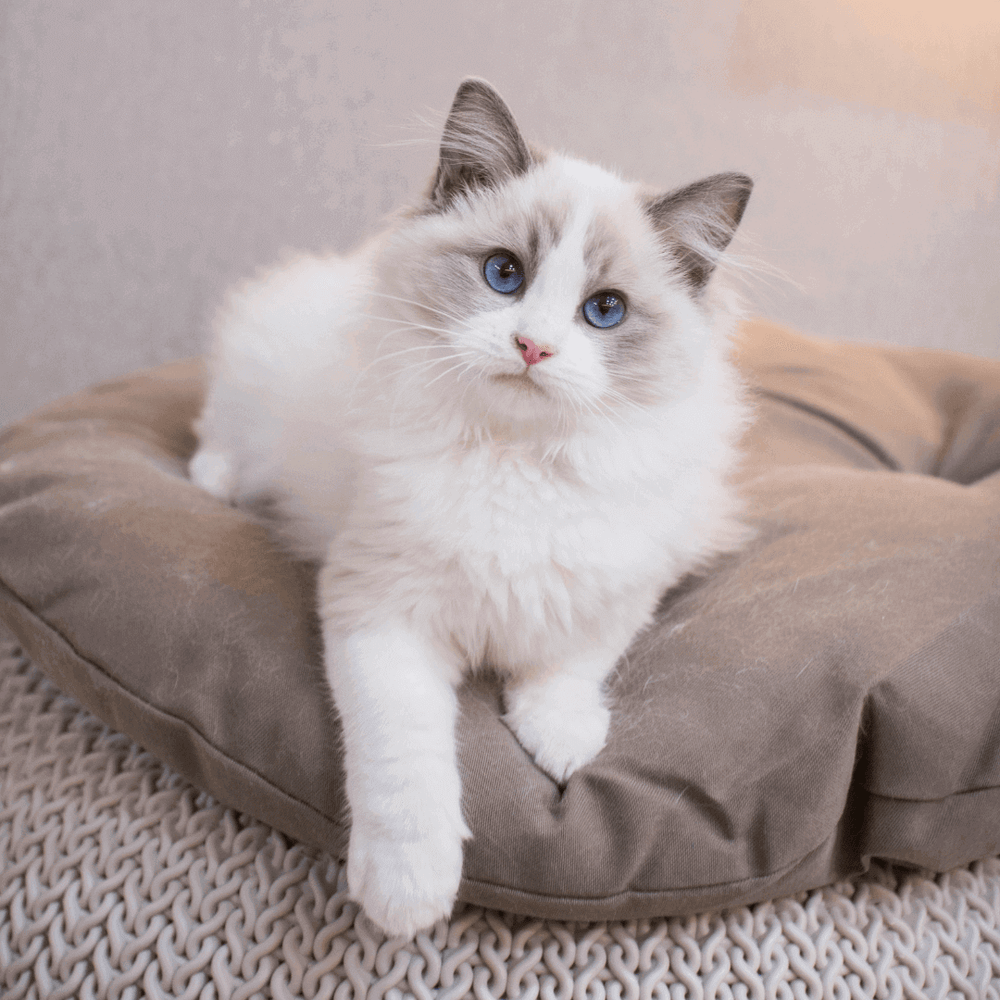
How to properly feed your Ragdoll kitten?
We couldn't finish our article without talking about the kitten. And it needs a suitable diet to grow and be healthy.
Just like for its elders, your kitten's food must cover all its nutritional needs: good animal proteins, lipids, minerals, vitamins and a little fiber for its little belly.
However, unlike adults, kittens need a little more calories and fat. And for good reason, they are growing! They need a lot of energy. They also need a greater intake of calcium and phosphorus, two essential nutrients for the development of their skeleton. But once again, the quantity of these two nutrients must be perfectly proportioned and balanced!
If you have a kitten at home, offer him kibble and pâtés adapted to his age. You can then give him food for adult cats when he has finished growing. At Ziggy, we recommend giving special kitten food until the age of 12 months.
Before his first birthday, avoid giving him adult cat food; this can be very harmful to his health. We explain everything in our article: Giving adult kibble to a kitten: dangerous!
Now you know everything about feeding Ragdoll cats. If you want to try our products, we offer discovery boxes . Your little cat will be able to taste them (and adopt them). We have many Ragdoll cats in the Ziggy Family, well-fed felines who are happy in their paws. 💛


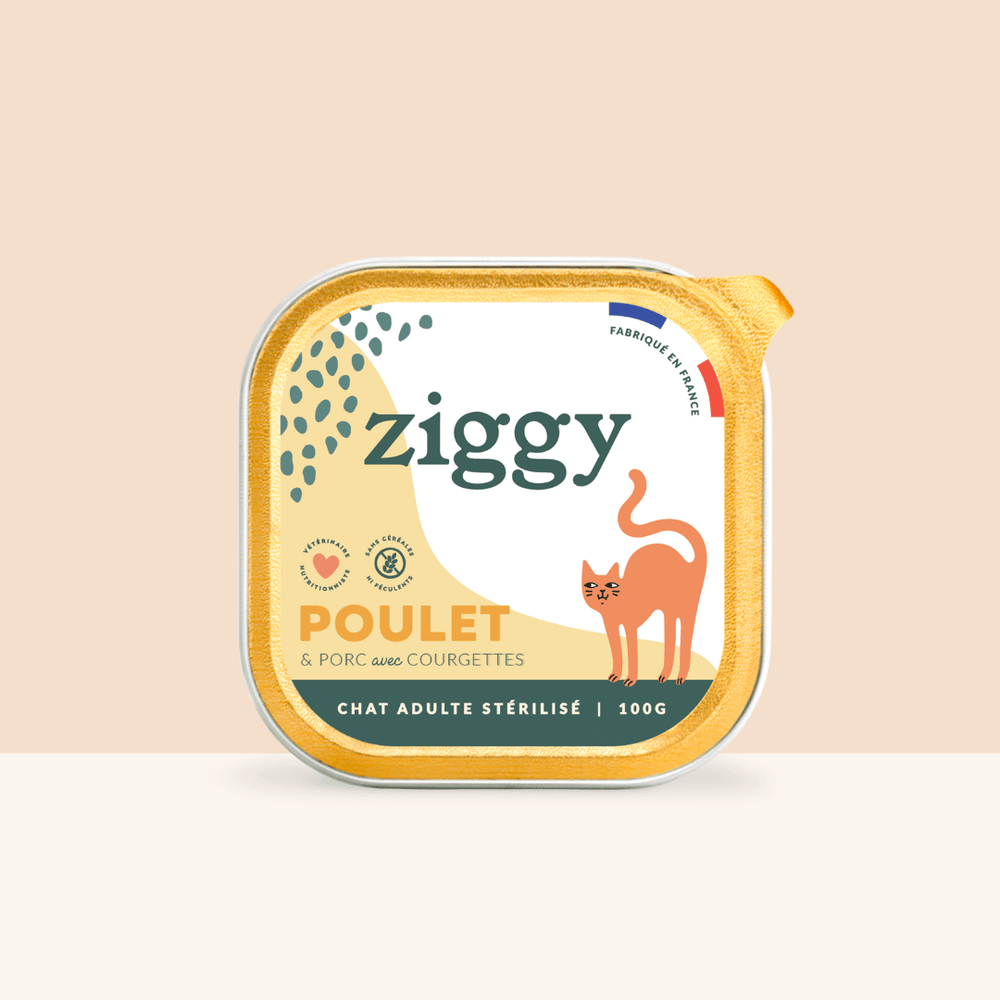
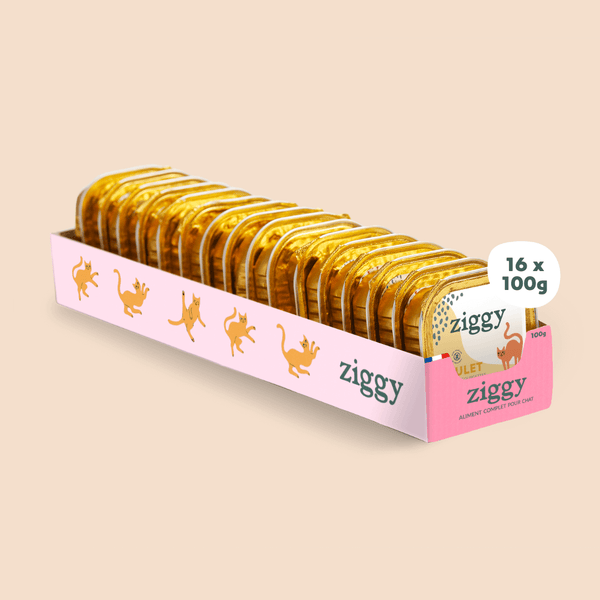


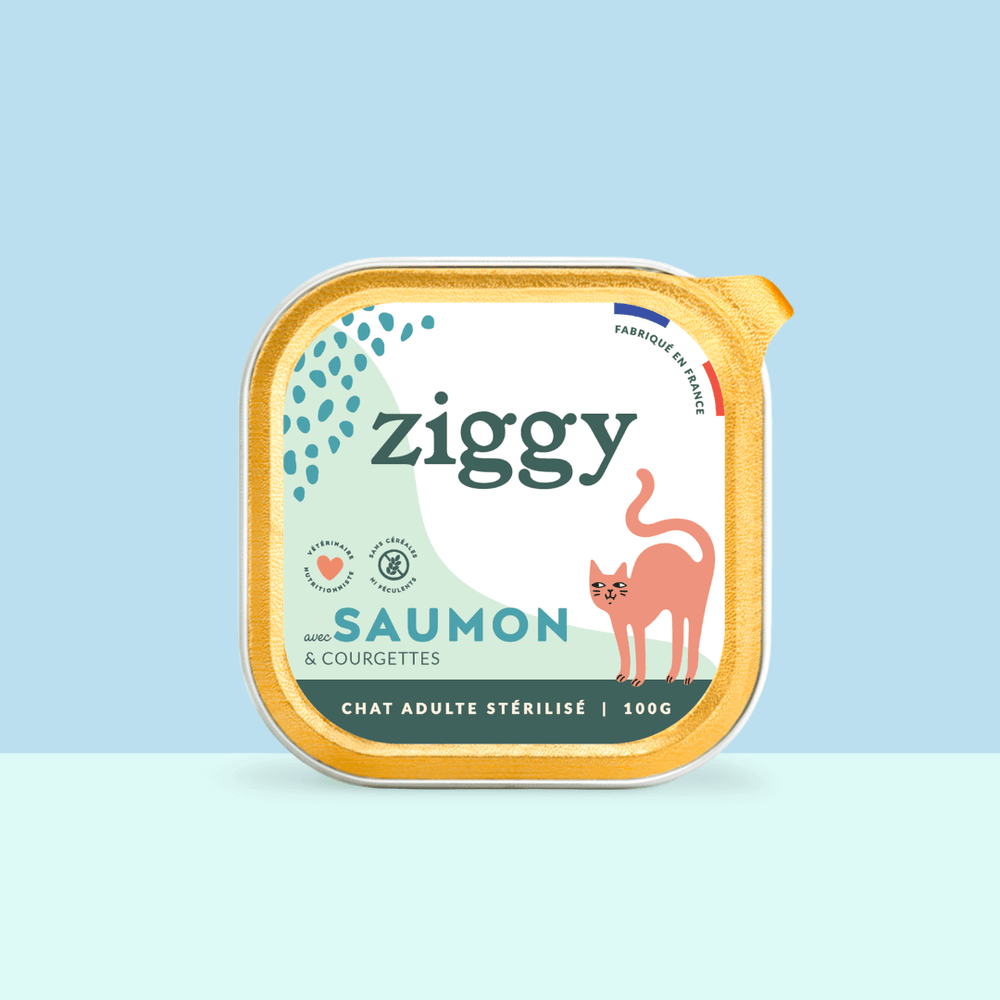
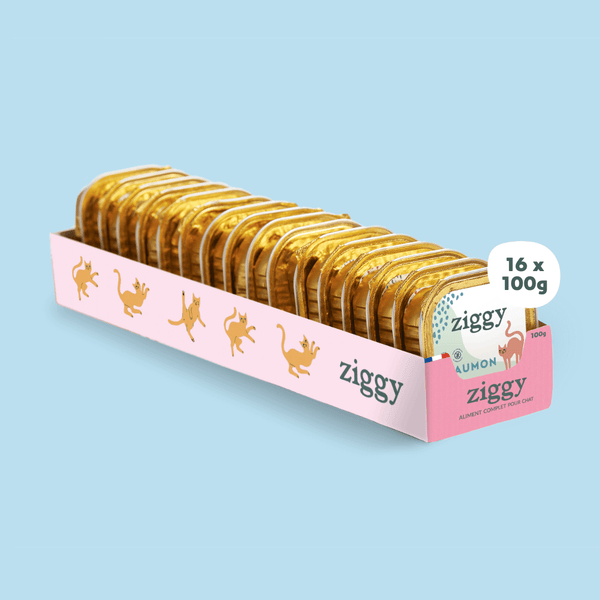


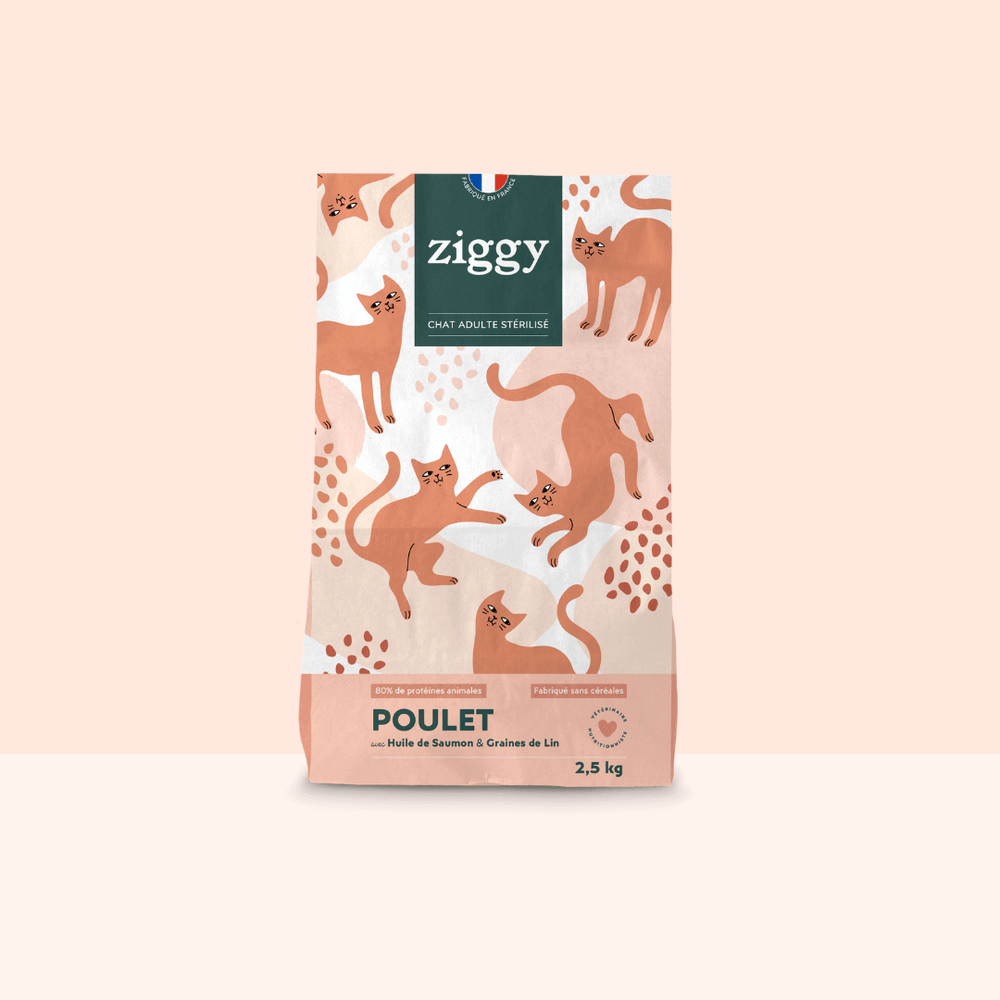
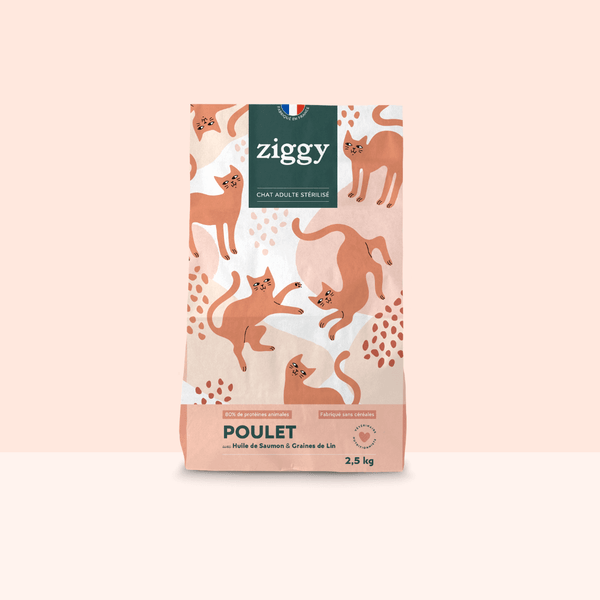

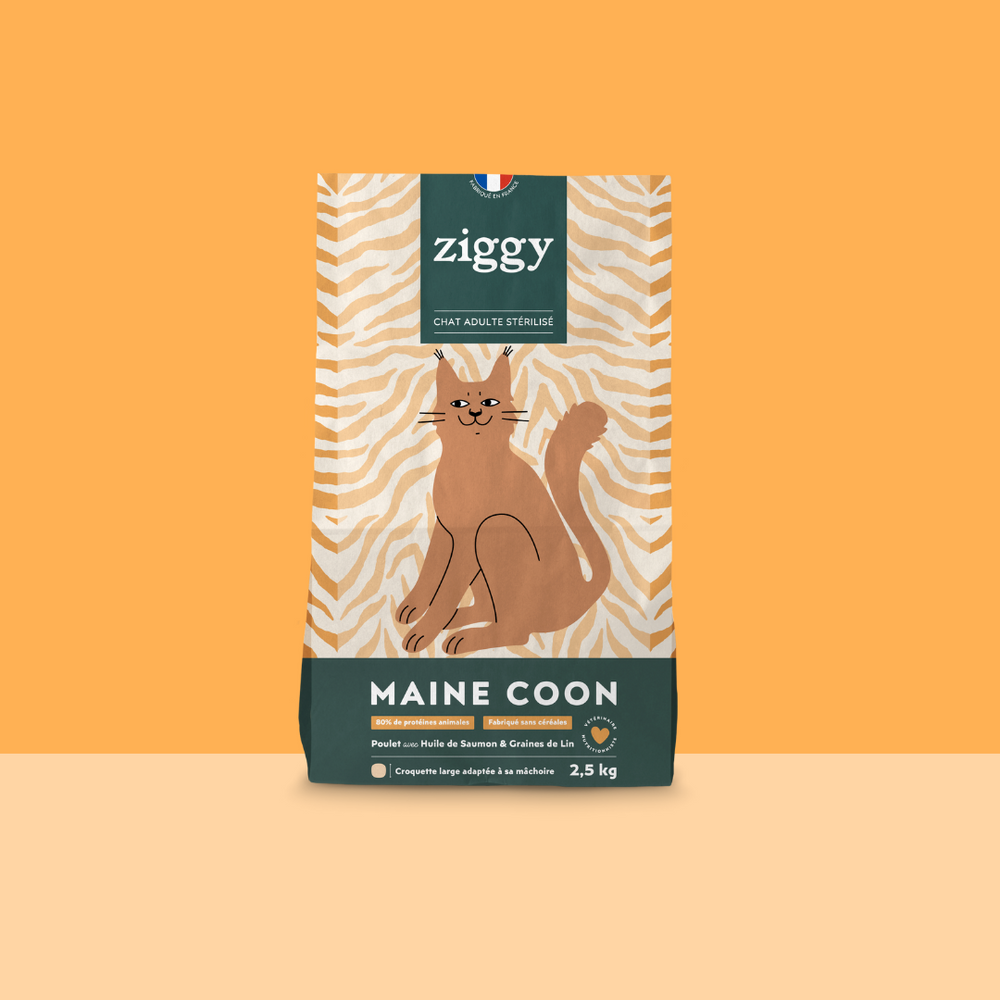
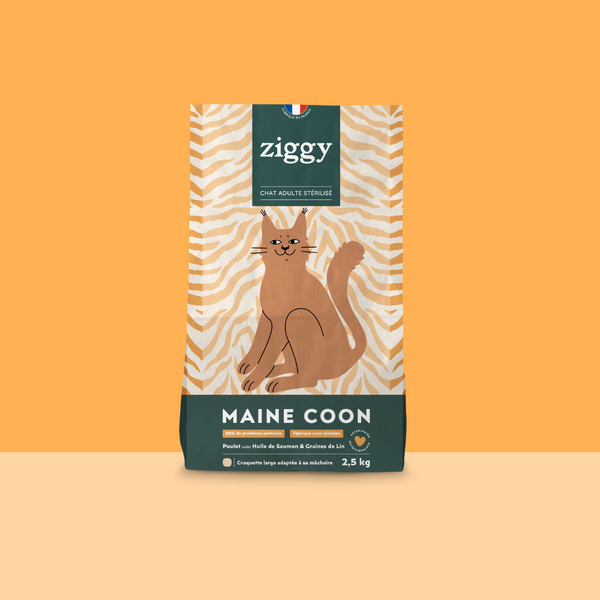
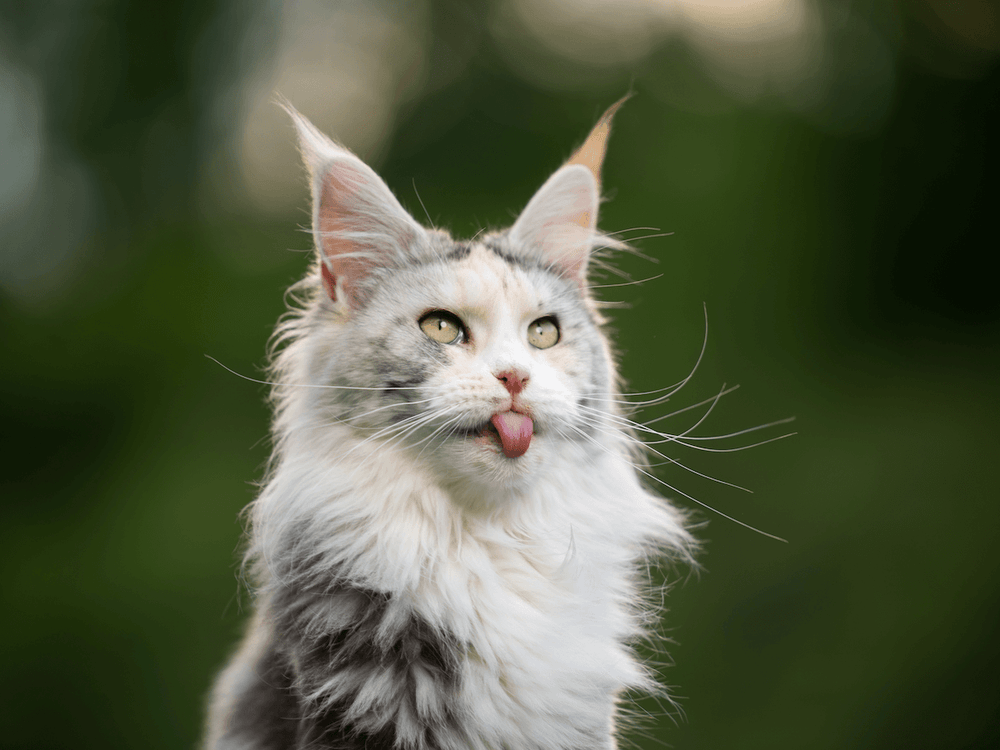
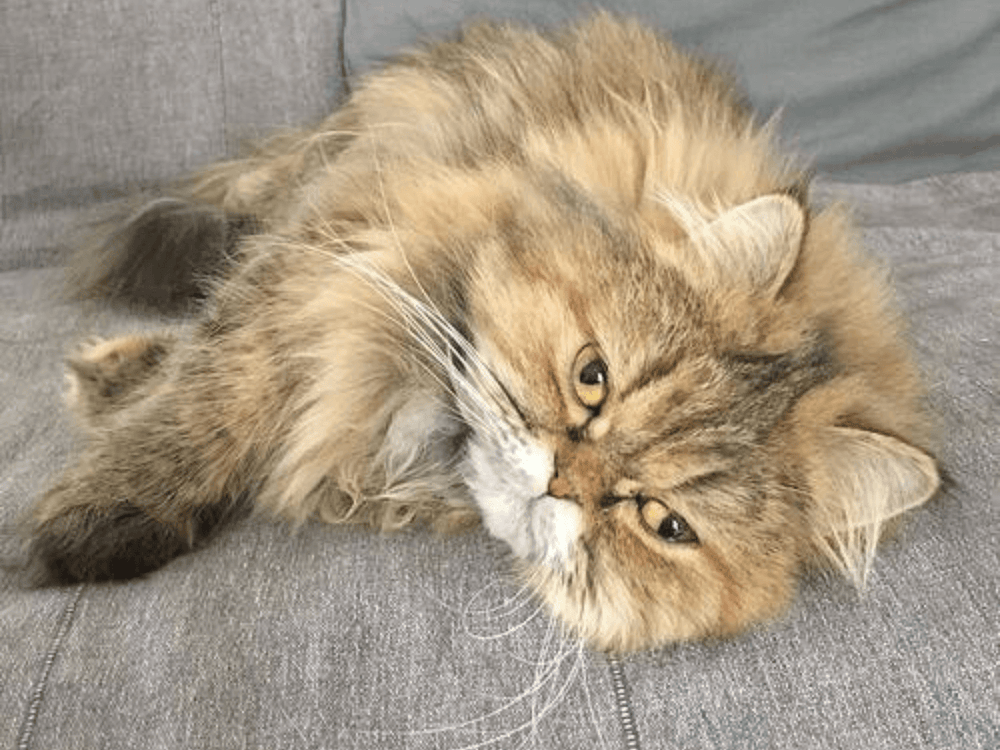
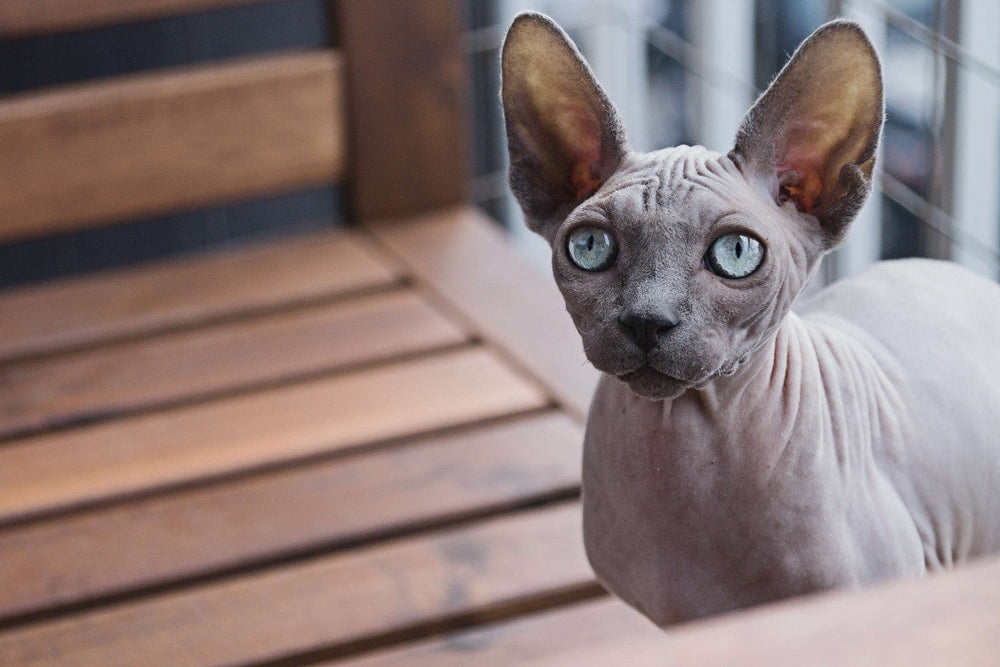
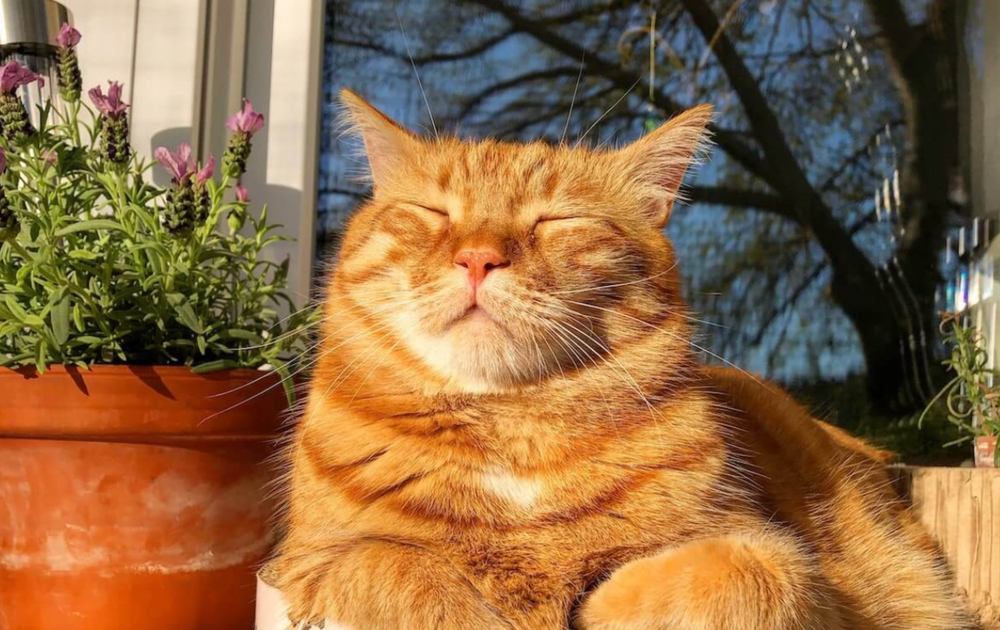
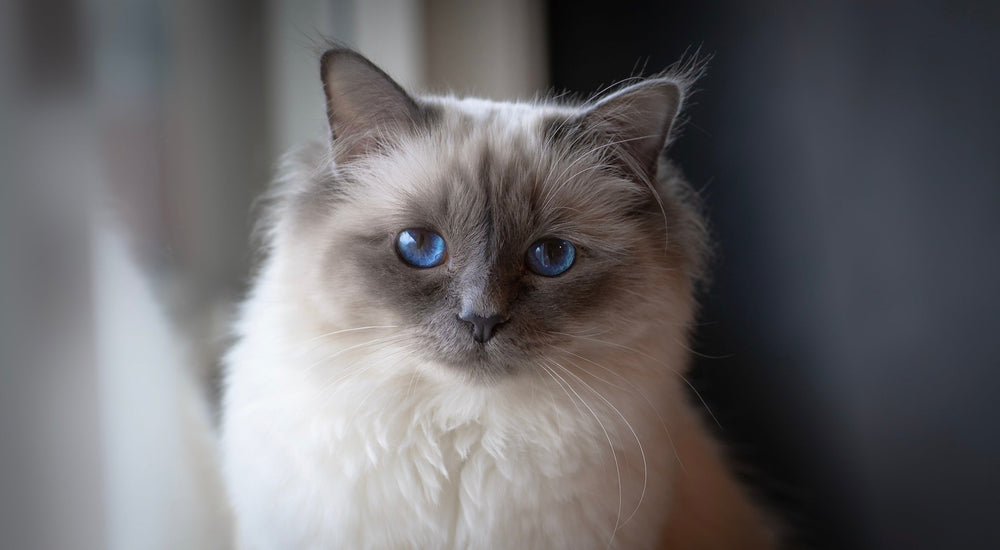
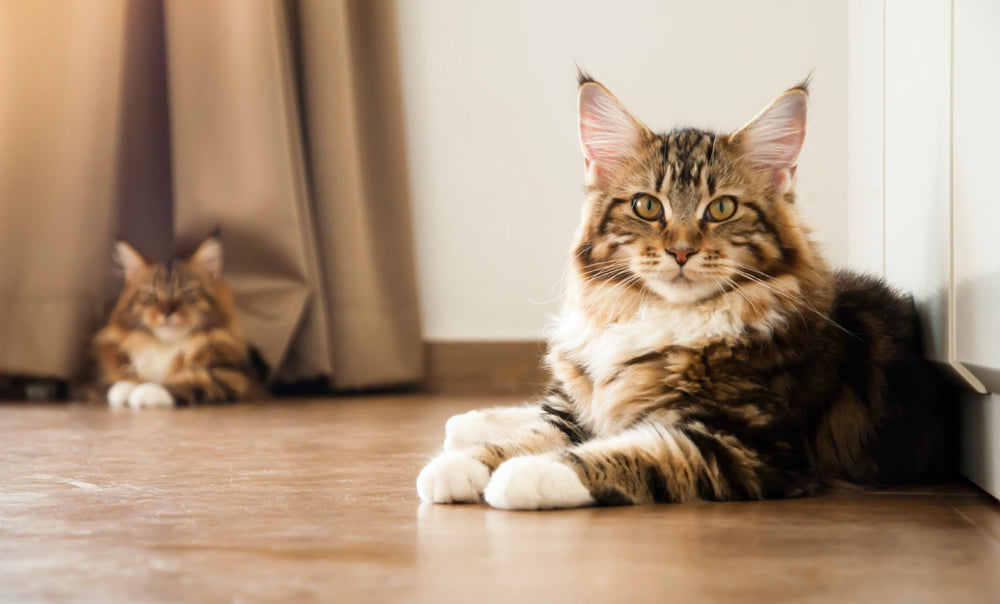
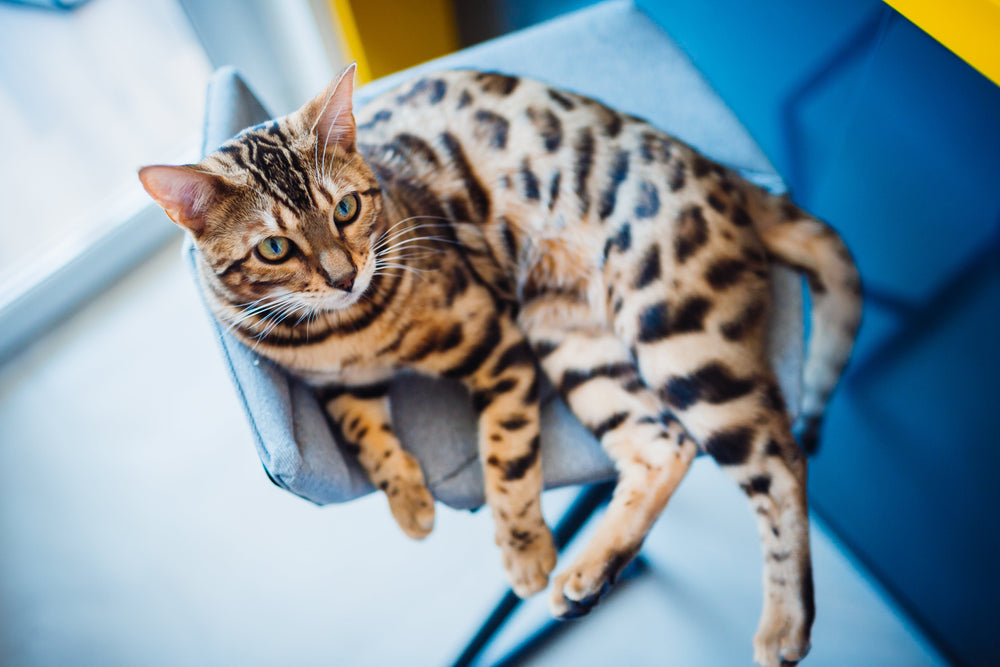
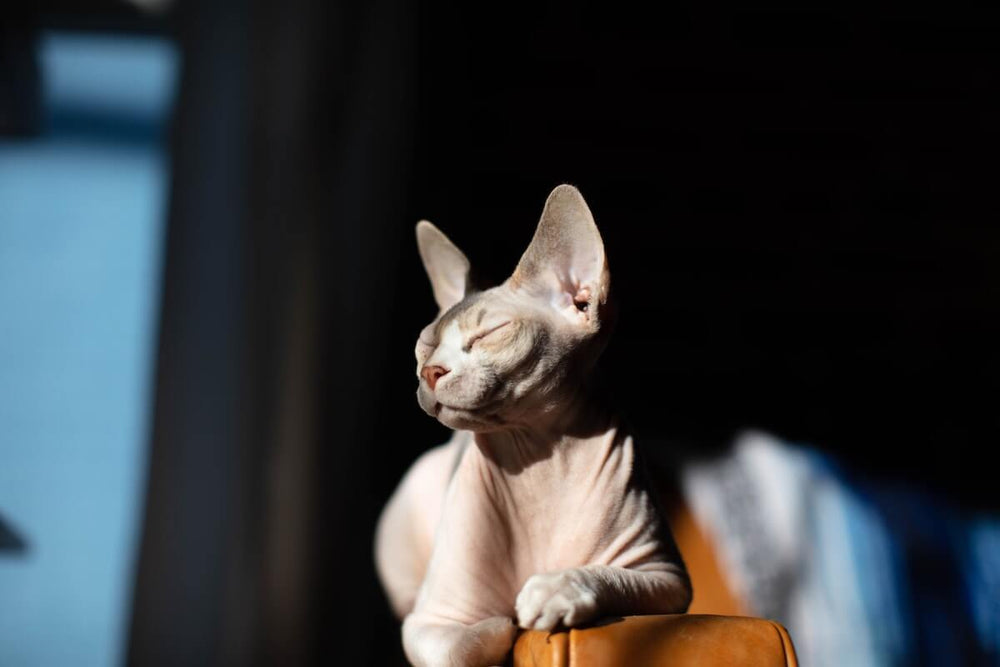
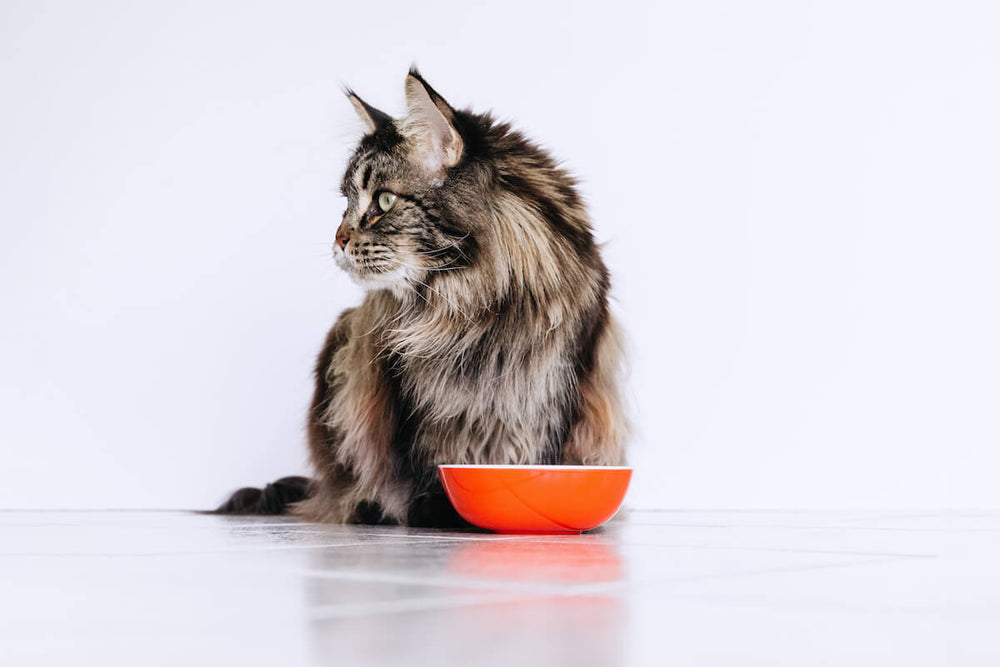
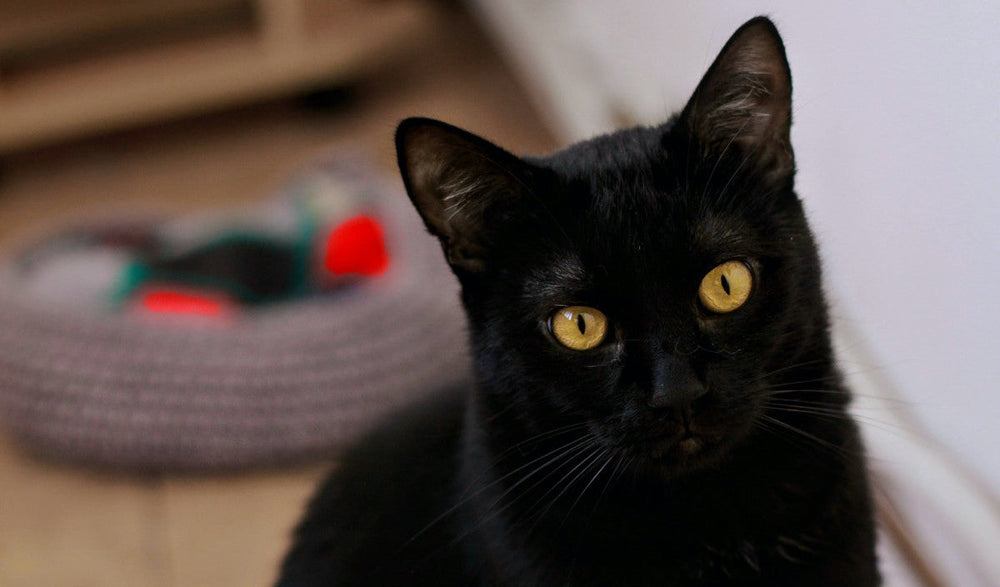
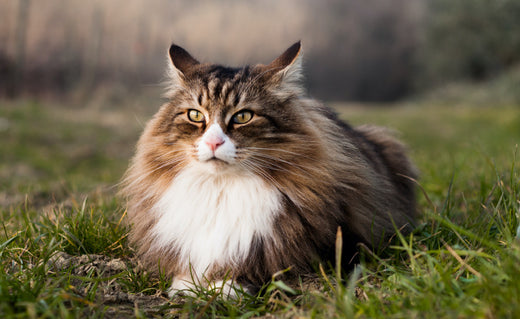
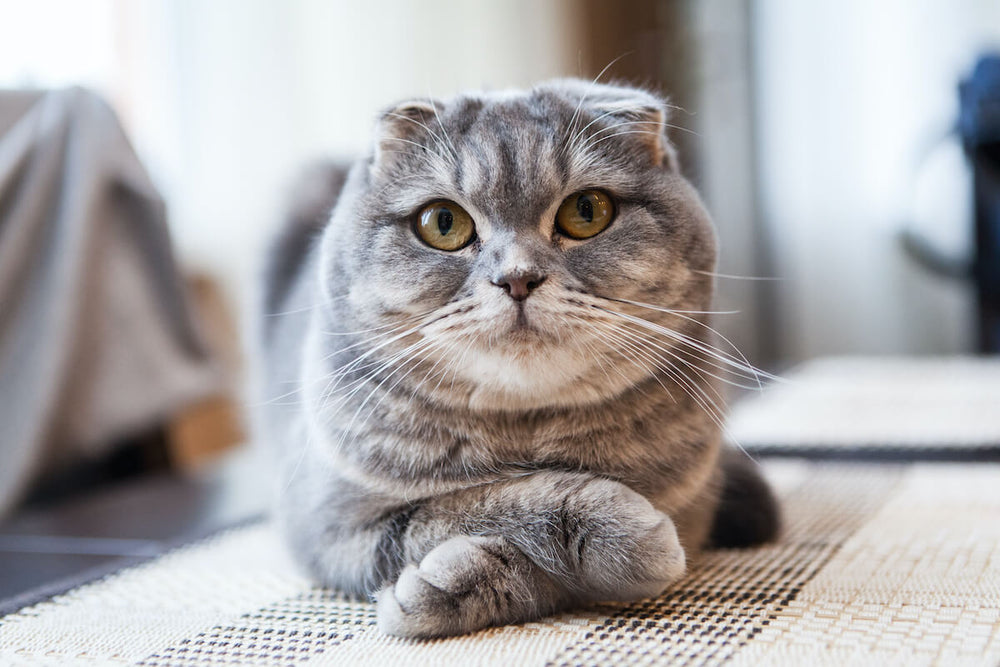
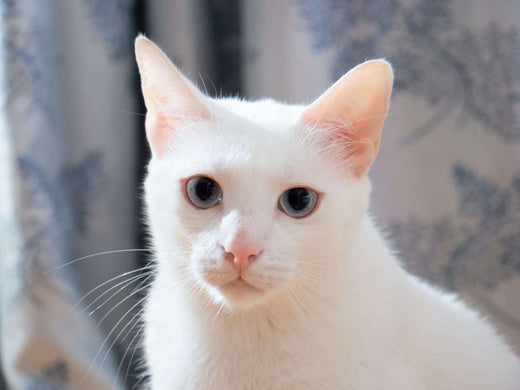
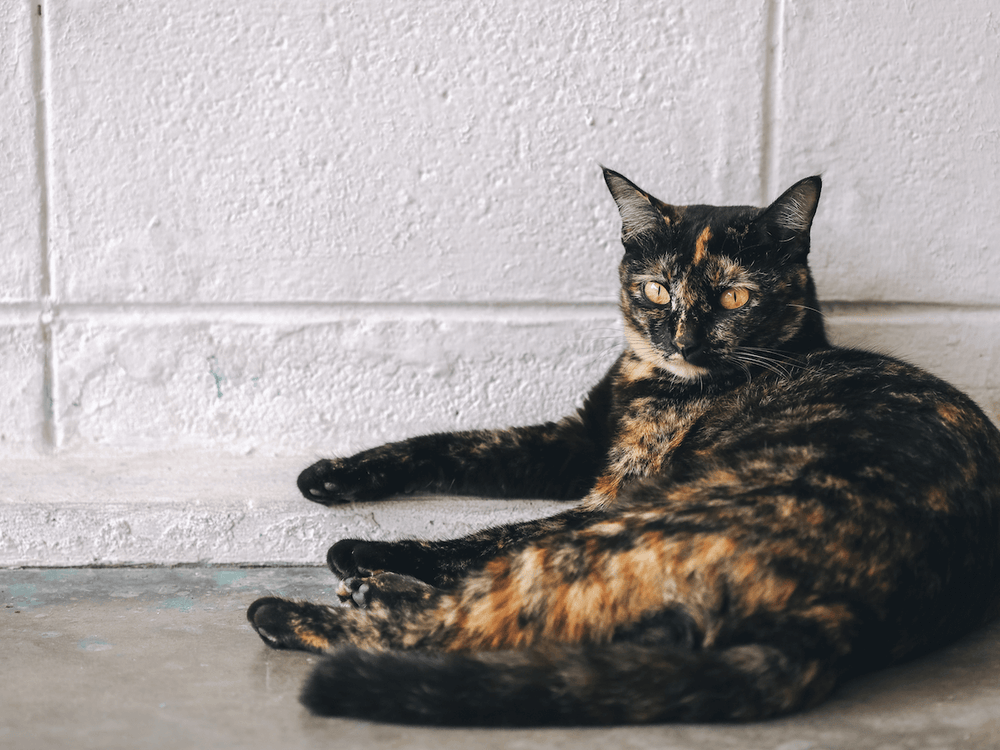
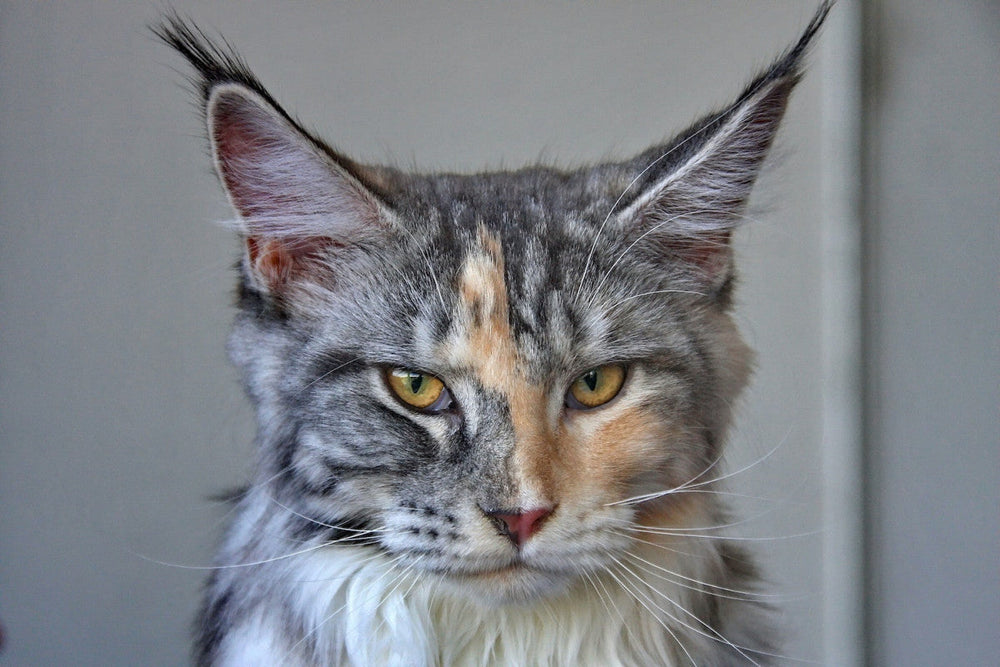



Bonjour Céline,
Concernant l’appellation de nos produits, on comprend tout à fait votre réflexion. 😺
Nous utilisons effectivement des abats de porc dans nos recettes. Cela nous permet notamment de garantir aux chats qui mangent du Ziggy un apport en protéines de qualité. ✨
Le porc a également l’avantage d’être une viande maigre, une viande “blanche”, qui est peu calorique et disponible en quantité suffisante en France, car largement consommée par les Français.
De plus la région dans laquelle se situe notre usine (Vire, en Normandie), est une région d’élevage porcin et bovin.
Du fait de ses caractéristiques, c’est une viande très utilisée dans l’alimentation pour chat !
C’est directement visible quand les marques sont transparentes (comme Ziggy) car elles indiquent l’origine des protéines utilisées. Certains fabricants ne mentionnent pas tous les ingrédients utilisés ou vont avoir des mentions plus vagues comme “Viande et sous-produits d’origine animale”. Pour autant le porc reste la viande la plus utilisée. 🙏
Comme nous utilisons du porc dans toutes nos recettes, nous les différencions par les autres ingrédients utilisés (poulet, bœuf, saumon…). L’appellation devient légale, dès que 4% de cette matière première est utilisée dans la composition de la recette.
Chez Ziggy, nous souhaitons cependant être 100% transparents, c’est pour cette raison que le pourcentage de chacune de nos protéines animales est affiché et directement accessible sur nos fiches produits.
N’hésitez pas à revenir vers nous si vous avez d’autres questions, nous sommes là pour vous aider !
L’équipe Ziggy
Bonjour,
Vos précisions sont très complètes, mais je me pose la question, pourquoi dans vos pâtés dites au poulet contiennent 40% de porc ? + de porc que de poulet….
Je vous remercie par avance. Cdt
Merci Danielle pour votre commentaire 💛
Si vous avez la moindre question ou besoin d’un accompagnement, nous sommes là pour vous. 😽
Bonne dégustation à Nina. 😻
L’équipe Ziggy
Merci beaucoup pour vos précieux conseils – Je pense passer Nina à vos produits dès que j’aurai fini ses croquettes actuelles – Je vais aller acheter chez le vétérinaire de Villers-Cotterêts (02) quelques boites pour faire la transition de son alimentation humide dans un premier temps – ensuite idem pour les croquettes
Vous tiendrai au courant !
Cordialement
“la maman” de Ricci Nina
Leave a comment